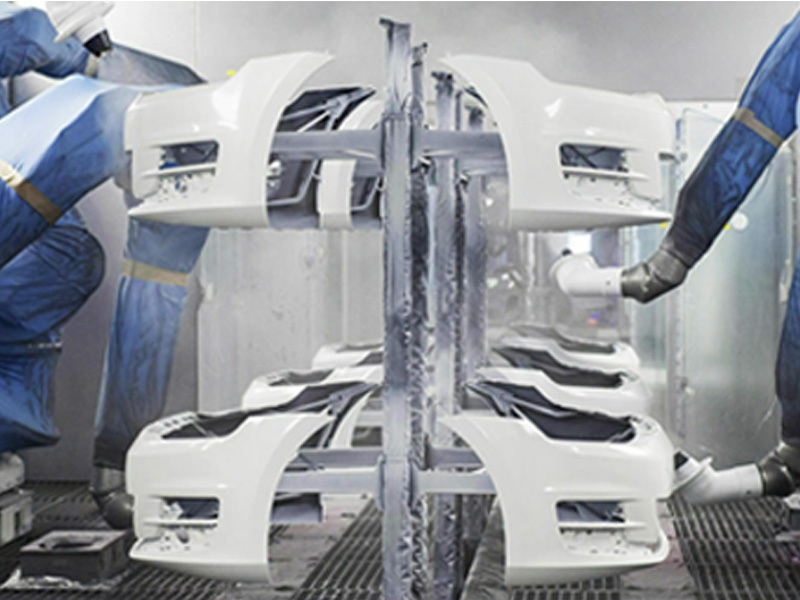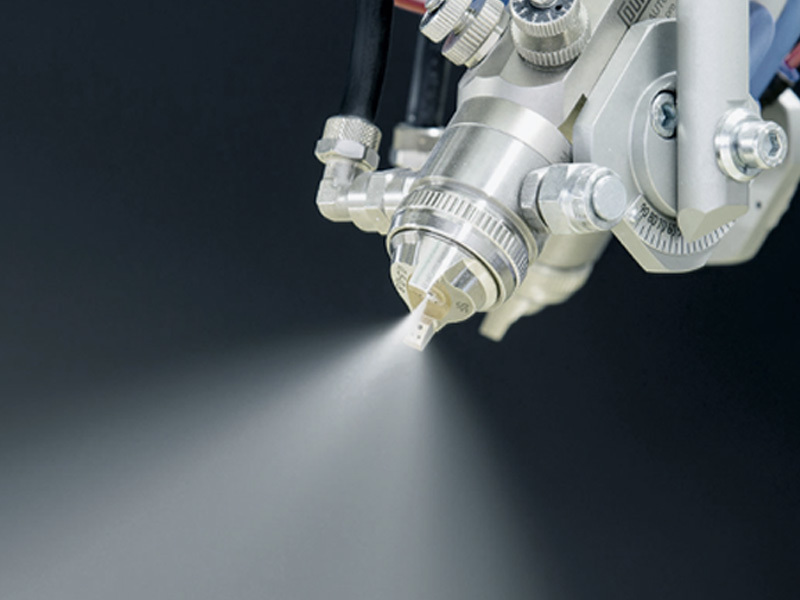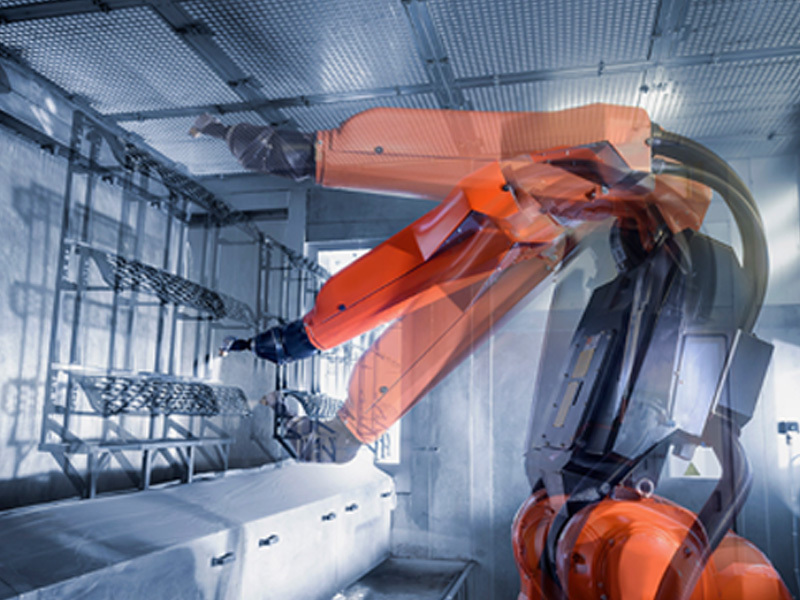The Advantages of Using Automatic Paint Robot Arms in Small Businesses
Release time:
2025-06-16
Integrating automatic paint robot arms into small businesses offers a multitude of advantages, from increased efficiency and cost-effectiveness to enhanced quality and safety.

1. Introduction
In today's competitive market, small businesses are continually seeking ways to improve their operations, enhance productivity, and reduce costs. One innovative solution gaining traction is the use of automatic paint robot arms. These advanced machines are designed to automate the painting process, offering a myriad of advantages that can significantly benefit small enterprises. In this article, we will delve into the various benefits of adopting automatic paint robot arms and how they can transform operations for small businesses across multiple sectors.
2. Key Benefits of Using Automatic Paint Robot Arms
The integration of automatic paint robot arms into small businesses presents numerous advantages. Here, we explore some of the most compelling benefits these systems offer.
2.1 Increased Efficiency and Productivity
One of the primary benefits of automatic paint robot arms is their ability to drastically enhance efficiency and productivity. By automating the painting process, businesses can achieve faster turnaround times than traditional manual painting methods. Robot arms can operate continuously without the need for breaks, leading to higher output levels. This efficiency not only reduces production times but also allows businesses to meet tight deadlines and accommodate larger orders effortlessly.
2.2 Cost-Effectiveness
Investing in automatic paint robot arms can lead to significant cost savings in the long run. While the initial investment may seem daunting, the reduction in labor costs and material waste can offset this expenditure. Robots can minimize paint overspray and ensure precise application, resulting in lower material costs. Additionally, fewer human workers are needed, which can lead to decreased payroll expenses. In essence, the return on investment (ROI) for automatic paint robot arms can be substantial for small businesses looking to streamline their operations.
2.3 Enhanced Paint Quality and Consistency
Consistency is key in any production process, and automatic paint robot arms excel in this area. These machines are designed to deliver uniform paint application, ensuring that every product meets the highest quality standards. Human error, such as uneven strokes or inconsistent coverage, is virtually eliminated when using robotic systems. This enhanced quality not only improves customer satisfaction but also strengthens a business's reputation for excellence, potentially leading to repeat business and referrals.
2.4 Improved Workplace Safety
Workplace safety is a paramount concern for small businesses. The use of automatic paint robot arms can help mitigate safety risks associated with manual painting processes. By removing human workers from potentially hazardous environments—such as those with toxic fumes or high-pressure equipment—businesses can create a safer work environment. Moreover, robots can perform tasks that may be physically demanding or dangerous, reducing the likelihood of workplace injuries and associated costs.
3. Applications of Automatic Paint Robot Arms in Small Businesses
Automatic paint robot arms are versatile and can be utilized in various industries to improve painting processes. Below are some key sectors where these robotic systems are making a significant impact.
3.1 Manufacturing Industry
In the manufacturing sector, automatic paint robot arms play a crucial role in enhancing production efficiency. From automotive parts to heavy machinery, these robots can quickly and consistently apply paint, ensuring that products are ready for market in record time. Their ability to adapt to different painting requirements makes them ideal for manufacturers looking to scale their operations without sacrificing quality.
3.2 Automotive Sector
The automotive sector has widely embraced automatic paint robot arms to streamline the painting of vehicles. These robots can achieve high levels of precision and efficiency, allowing manufacturers to create a flawless finish on cars and trucks. By using robotic arms, automotive companies can reduce paint waste and environmental impact while improving overall production speed, which is crucial in a highly competitive market.
3.3 Home and Furniture Industry
In the home and furniture industry, automatic paint robot arms are being utilized to paint a range of products, from cabinets to home decor items. The consistency and quality offered by these robots ensure that each piece meets customer expectations. Businesses in this sector are finding that automating their painting processes not only enhances product quality but also allows for greater design flexibility and customization options for their clients.
4. How to Integrate Paint Robot Arms into Your Business
Integrating automatic paint robot arms into a small business requires careful planning and consideration. Here are steps to streamline the integration process:
1. Assess Your Needs: Determine the specific painting tasks that could benefit from automation. Analyze your current processes and identify areas for improvement.
2. Choose the Right Equipment: Research different types of paint robot arms and select the one that best fits your operational needs, budget, and space constraints.
3. Train Your Staff: Ensure that your team is adequately trained to operate and maintain the robotic systems. This training can help maximize the benefits of automation while minimizing operational disruptions.
4. Monitor Performance: After integration, regularly monitor the performance of the robot arms to identify any issues and optimize their operation for maximum efficiency.
5. Seek Expert Advice: Consider consulting with specialists or companies that have experience in robotic automation to gain insights and best practices for successful integration.
5. Understanding the Costs Involved
Before investing in automatic paint robot arms, it is essential to understand the associated costs. The price of robotic systems can vary widely depending on their capabilities, size, and features. In addition to the initial purchase price, consider the following factors:
- Installation Costs: Budget for the costs of installing the equipment, including any modifications needed in your workspace.
- Maintenance and Repairs: Factor in ongoing maintenance expenses to keep the robots operating efficiently.
- Training Expenses: Allocate funds for training programs to ensure your staff can effectively operate the robotic arms.
- Software and Upgrades: Consider costs associated with software updates and additional features that may be beneficial as your business grows.
6. The Future of Automatic Paint Robot Arms in Small Businesses
The future of automatic paint robot arms in small businesses looks promising, with advancements in technology paving the way for even more efficient and user-friendly systems. As robotics continue to evolve, we can expect to see improvements in artificial intelligence, machine learning, and connectivity, allowing for smarter automation solutions. Small businesses that embrace these innovations will not only enhance their productivity but also stay ahead of the competition.
Integrating automatic paint robot arms into small businesses offers a multitude of advantages, from increased efficiency and cost-effectiveness to enhanced quality and safety. By embracing this technology, small enterprises can revolutionize their operations and maintain a competitive edge in today's fast-paced market. The investment in robotic automation is not just a trend; it is a strategic move that can lead to sustainable growth and success in the long run. As technology continues to advance, the future of painting automation looks bright, and small businesses should consider taking the leap into this innovative realm.











